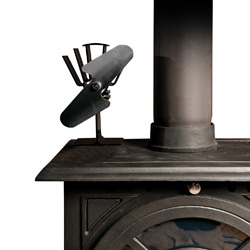Softwood or Hardwood?
Traditionally hardwoods - Oak, Sycamore, Ash - have been considered better as fuel than softwoods - Larch, Spruce, Douglas Fir. The reason is that hardwood is denser, so an identically sized hardwood log contains more carbon, provides more heat and burns longer.
The truth is that both are good fuels. A kilogram of softwood can have the same calorific value as a kilogram of hardwood. You will need a greater volume of softwood logs to get the same energy, because they have a lower density, but they are generally cheaper. If you have room to store more logs and you don't mind re-filling your stove a little more often then softwood could be for you.
Wet Or Dry?
The most important measure for quality of wood fuel is moisture content. A heavier log will nor necessarily give more heat as half the weight of a green stove can be water!
Wood needs to be dried, or seasoned, before burning. Forced or accelerated drying in powered or solar kilns is becoming more common with wood fuel processors.
 The more water in the wood you burn, the less heat for your house, because some of the hear released from your fire will have to evaporate the water, cooling the whole burning process down. This is heat that should be used to heat your home rather than create I efficient steam.
The more water in the wood you burn, the less heat for your house, because some of the hear released from your fire will have to evaporate the water, cooling the whole burning process down. This is heat that should be used to heat your home rather than create I efficient steam.Burning wet wood with more than 25% moisture content creates corrosive smoke and tar that can damage flue linings and cause chimney fires. Dry wood produces little smoke, low tar deposits and high efficiency heat output, especially when burnt in a modern appliance able to efficiently burn combustion gases.
Freshly harvested wood will typically have a moisture content of 50%. Drying wood down to 20-25% moisture content will approximately double it's heat output.
The industry quality standard has been set at 25% moisture content or less. It's always recommend you buy a moisture meter to test your firewood along a freshly split surface.

As-well as ensuring that you're burning the correct wood, excellent air circulation around the stove is essential to ensure the whole room is heated rather than just a hot area around the stove. Many of you may have already experienced this, the area around the stove is lovely and warm, but when you move away from the immediate vicinity of the stove the temperature drops dramatically.
This problem can be solved by using a heat-powered stove fan, as the stove heats up the fan blades start to spin and circulate the air around the room, meaning you could essentially get more heat from your stove.




